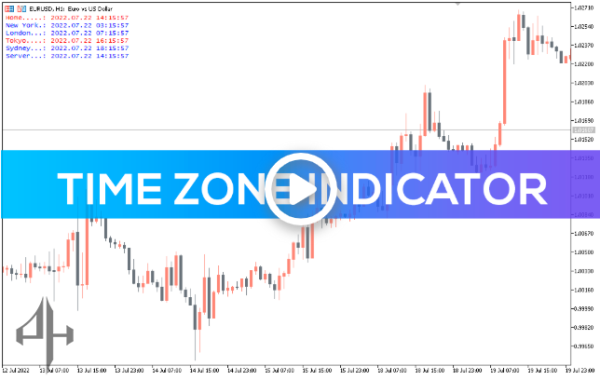
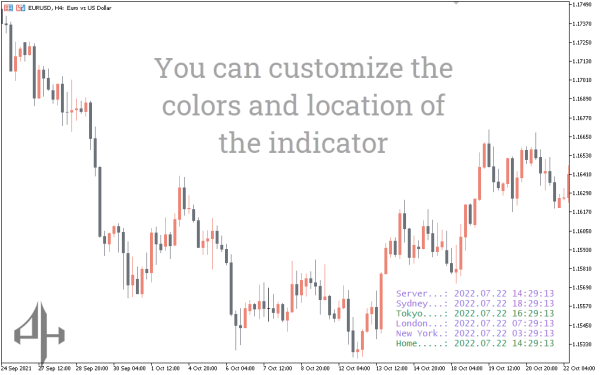
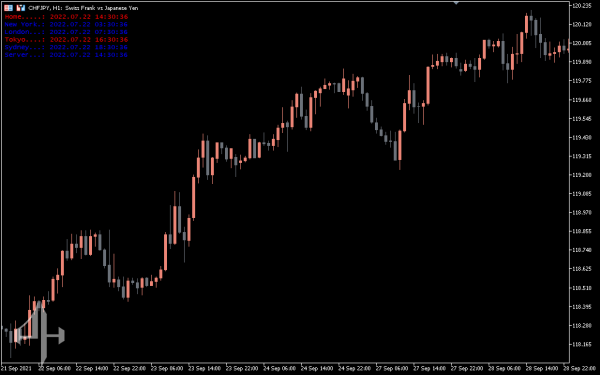
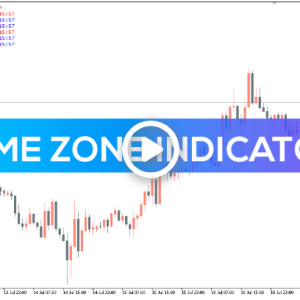
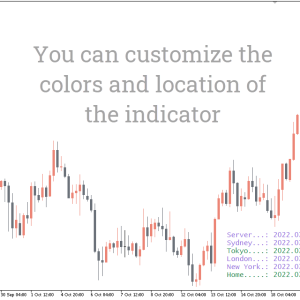
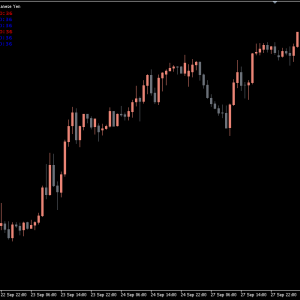
Time Zone Indicator, Master Global Markets
The trading sessions, their times, and the market’s current session are shown by the Time Zone Indicator.
- Description
- Reviews (0)
- Indicator Settings
Description
Market sessions, together with the time and session in which the market is currently trading, are displayed by the Time Zone Indicator. With the exception of Saturday and Sunday, the Forex markets are open twenty-four hours a day. The market does, however, have many sessions that start in various time zones. North American, European, and Asian time zones are these. It has been noted that a particular time zone influences how the Forex market acts.
Furthermore, placing orders in every time zone is not advised. The London sessions are one of the more volatile and liquid trading times. Other sessions are smaller, like the Sydney session. As a result, every trader should monitor all forex time zones, which can be done with the help of the time zone indicator.
The foundation
The trading sessions, their times, and the market’s current session are shown by the time zone indicator. This indicator displays trading sessions in Tokyo, Sydney, London, and New York.
As seen in the chart below, this indicator shows the current trading session in red on the chart.
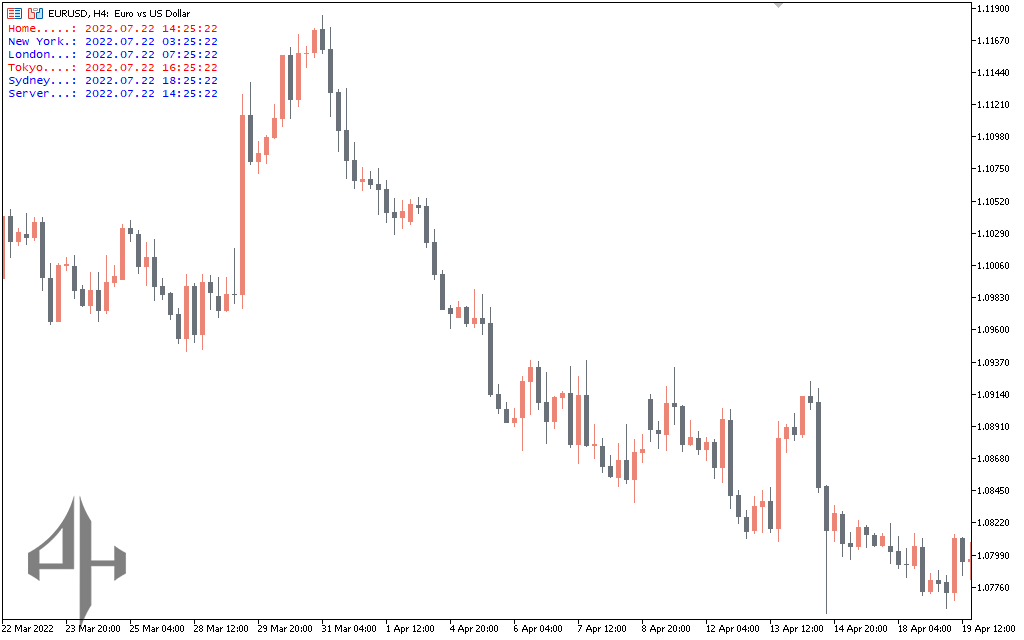
The market is presently in the Sydney trading session, according to the EURUSD H4 chart above. The red time zone indicator indicates this. The indicator will update the chart to the following session as soon as the Sydney session concludes.
With the help of this indicator, traders may open positions by knowing when a crucial trading session begins. Traders can use this indication to close their transactions by knowing when a specific session closes. Forex traders can therefore use this indication to determine when to enter and quit the market.
How to use the time zone indicator
Traders must understand the features of every trading session in order to use the time zone indicator for MT5 efficiently.
The Asian session is the first to begin. The Tokyo and Sydney sessions are part of the Asian sessions. About 20% of all forex transactions take place during these sessions.
Low trade volumes might occasionally result in relatively low liquidity. The majority of currency pairings will trade in a range as a result of this low liquidity. Australia, New Zealand, and Japan provide economic news throughout the Asian sessions. Stronger moves are seen in pairs that contain the JPY, AUD, and NZD.
The London session is the second one. Of all the sessions, the London session is the biggest. The London session handles about 32 percent of all transactions. Because of its enormous trading volume, the London session is renowned for its strong liquidity.
The spread is at its lowest during this session. Between the London period and the New York session, volatility somewhat decreases. Occasionally, just before the session ends, the market trend may shift, and traders in London may choose to collect their profits.
The last session took place in New York. After the London session, this one is the second largest. About 19% of all Forex market transactions take place during the New York session.
This session is renowned for having a high potential for market action. Actually, the US dollar is used in 85% of all transactions. When a session falls on top of the London session, it has considerable liquidity. The FX market sees the highest trade volume during this overlap.
In light of this, trading with this indicator is most effective during the overlap between the London and New York sessions. This is because the currency market is at its most turbulent and liquid around this time.
Because the London session, which has the most traders, overlaps with the New York session, which is the second largest, there is more liquidity and volatility during this overlap.
The market makers are actively participating in the transaction this time. Professional traders should therefore put their buy and sell orders at this time.
Conclusion
The MT5 Time Zone Indicator assists traders in making critical decisions by providing information about market trading sessions.
Be the first to review “Time Zone Indicator, Master Global Markets” Cancel reply
The MT5 settings for the Time Zone Indicator include the following options.
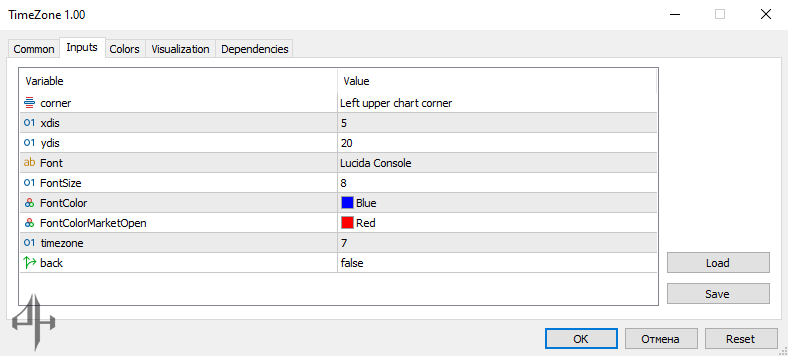
Corner: Specifies the corner of the chart where the indicator is displayed.
Xdis: Sets the horizontal (X-axis) offset.
Ydis: Sets the vertical (Y-axis) offset.
Font: Defines the font style used for the indicator.
Font Size: Sets the size of the indicator’s font.
Font Color: Specifies the color of the indicator’s font.
Font Color Market Open: Indicates the font color used when the market is open.
Time Zone: Sets the time zone for the indicator.
Back: The background setting.

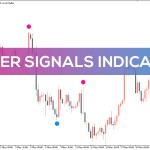
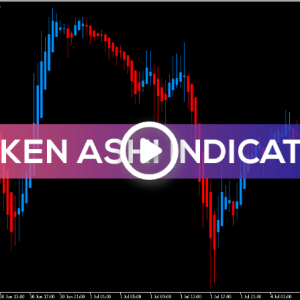
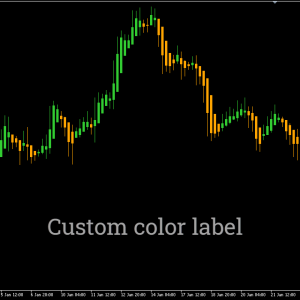
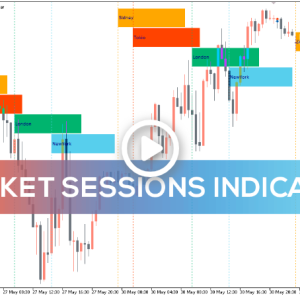
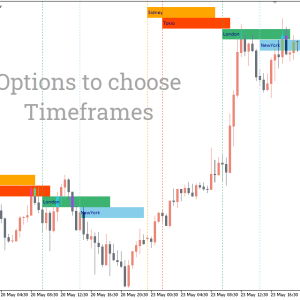
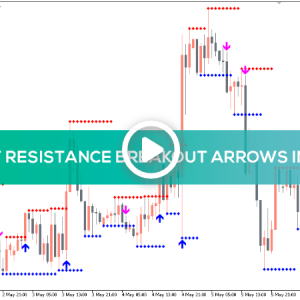
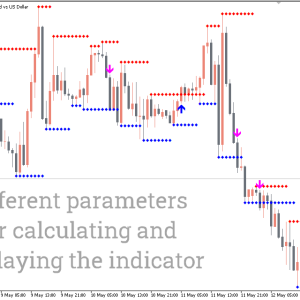
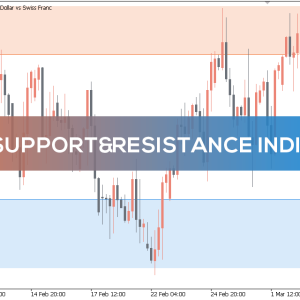
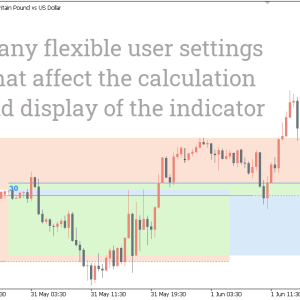
Reviews
There are no reviews yet.